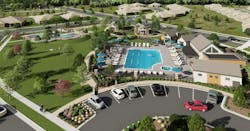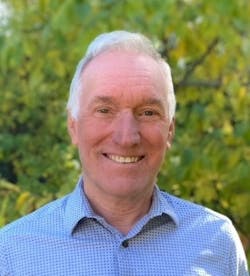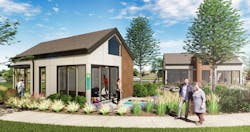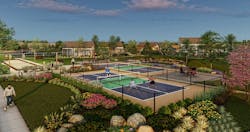Building Communities That Last a Lifetime
This article first appeared in the November/December 2024 issue of Pro Builder.
Homes should work for the people living in them, no matter the person’s age or ability. So says Brian Dunbar, director of Colorado State University’s Institute for the Built Environment (IBE).
Pro Builder: Can you tell me about the Institute for the Built Environment?
Brian Dunbar: The Institute for the Built Environment has been around for 30 years. We consult, do research, and provide teaching to professionals as well. CSU is a land-grant university, which means that it provides programs for communities in the state. I like to call it applied research or action research, because it provides more of a direct benefit for the community and for students as well.
We have had maybe 150 student interns over the years who get to work on real projects. They might come from landscape architecture or interior architecture, real estate or construction management or engineering and they get involved in these real projects. That really helps them bridge toward their careers.
PB: What led you to begin the Lifelong Homes and Communities program?
BD: It started seven years ago when we were contacted by Housing Priority group. They’re part of a Northern Colorado county organization called Partnership for Age-Friendly Communities. The problem they presented to us is that a lot of people are retiring to Northern Colorado and yet they can’t find housing, especially housing that meets their physical limitations.
That led us to do a lot of research and focus groups, and what came out of that was creating this program that could serve as a guidance system for builders, planners, developers, and architects so they could design and build houses that are lifelong-friendly in the first place.
PB: What does it mean to be a “lifelong community,” and what goals must a developer meet to achieve certification?
BD: A community needs to allow for social interaction. We know that you live longer when you have good social connections, and allowing for good mobility is important as well. This means opportunities for walking, biking, and fresh air.
A community should have gathering places, such as common buildings, and have educational programs held there. That’s the community aspect of it. And then you need at least some of the homes to be lifelong friendly. That means you could live entirely on one level of the home and have other accessibility features throughout that allow people to comfortably get around.
PB: What benefits does a lifelong community have over a traditional master planned development?
BD: The idea is that if you work toward satisfying the various features and criteria we have in our program, then you can market yourself as a certified lifelong community. I think there’s an obvious extra attraction for marketing that community.
There are also added benefits for residents. It’s all about living better and living longer, so we’ve incorporated both what are called the social determinants of health as well as blue zone principles into the creation of lifelong communities.
RELATED
- Alaina Money-Garman: 2024 Woman of the Year
- Building Blocks to Sustainable Construction
- Are Agrihoods a Growth Opportunity?
PB: Tell us more about Sonders and how it meets the criteria of a lifelong community.
BD: Sonders isn’t the only way to create a lifelong community, but it certainly is one way. The community consists of mostly single-family housing and some townhomes. One thing that’s so impressive about Sonders is that the developer didn’t need to incorporate five parks into the community, but they did ... and each park has its own purpose, and those purposes go right back to what can help people live and thrive.
The community has trails, a swimming pool, and a community building. There will also be a long-term connection with Colorado State University for ongoing active adult learning.
PB: Are there other housing developments that are in the process of receiving Lifelong Homes and Communities certification?
BD: There’s another project we’re working on right now called PoleStar Village. That’s also in Fort Collins but it’s quite different from Sonders. It’s 20 acres on an old family farm. They’re calling it an intentional community and it will be for people from age 0 to 110.
PoleStar has several different kinds of housing: single-family, multifamily, and even a senior living area. That way, if a senior needs extra care, they could receive it in their community while still having a multigenerational experience.
PB: Is there anything else you would like to add that I have not already asked you about?
BD: We created this program, and at some point, I think there will be a third-party national organization that takes on the certification. We will continue to do the education and research and help developers and builders on various projects.
About the Author

Catherine Sweeney, Associate Editor
Catherine Sweeney is the associate editor for Pro Builder and Custom Builder Online.




